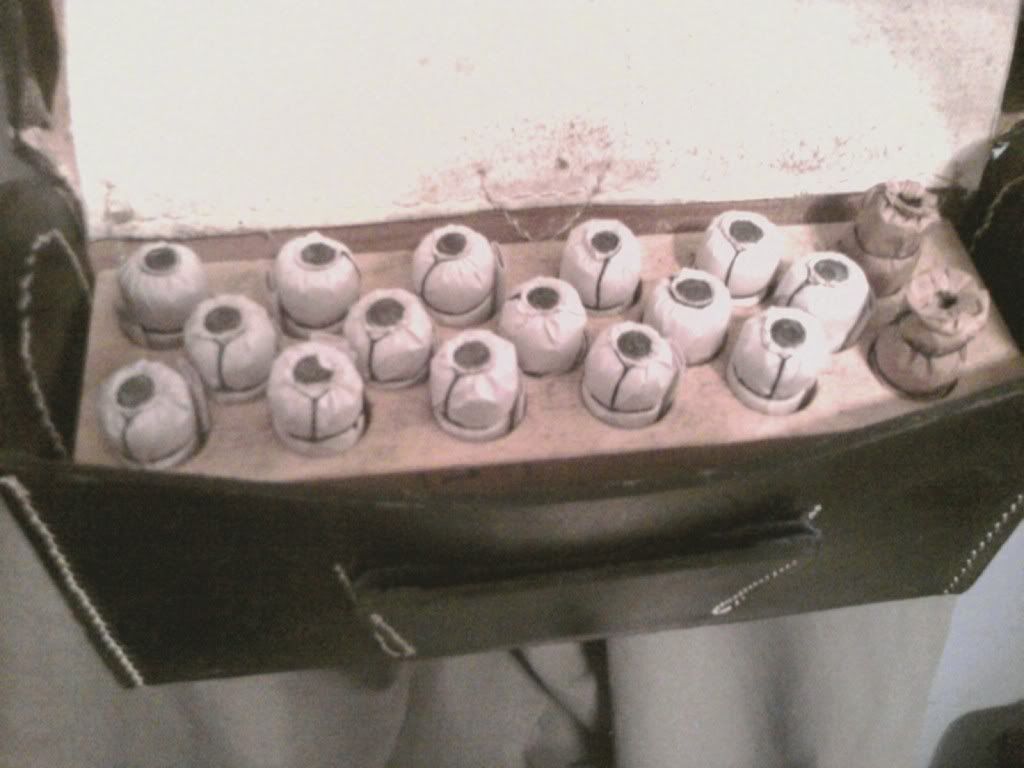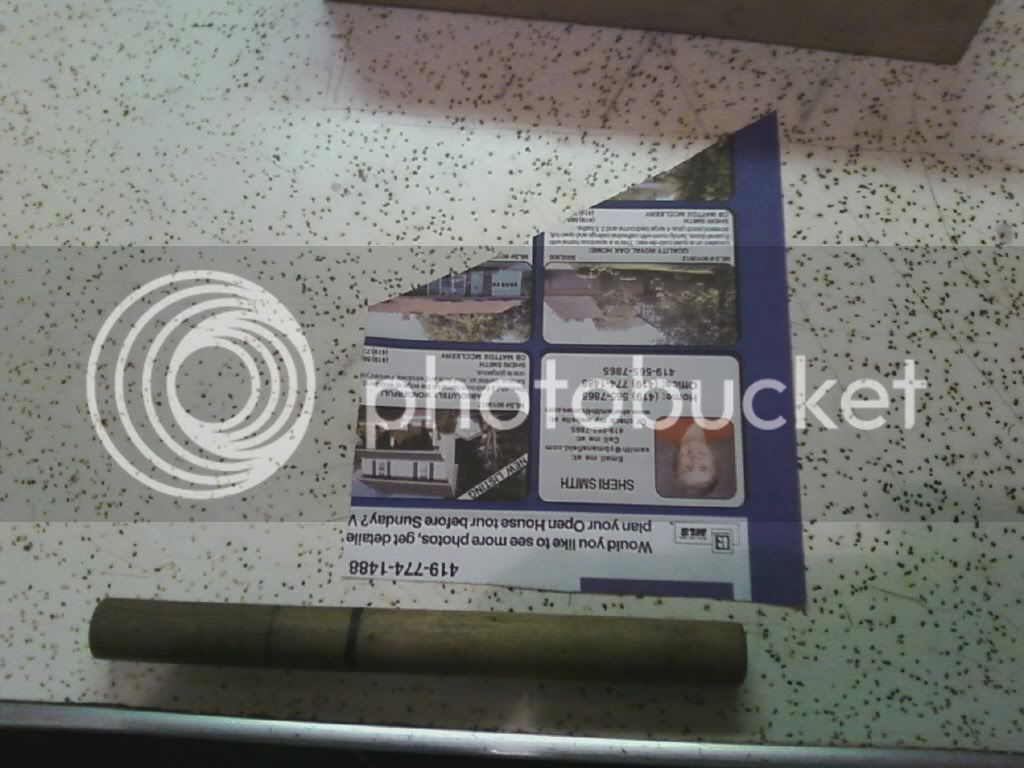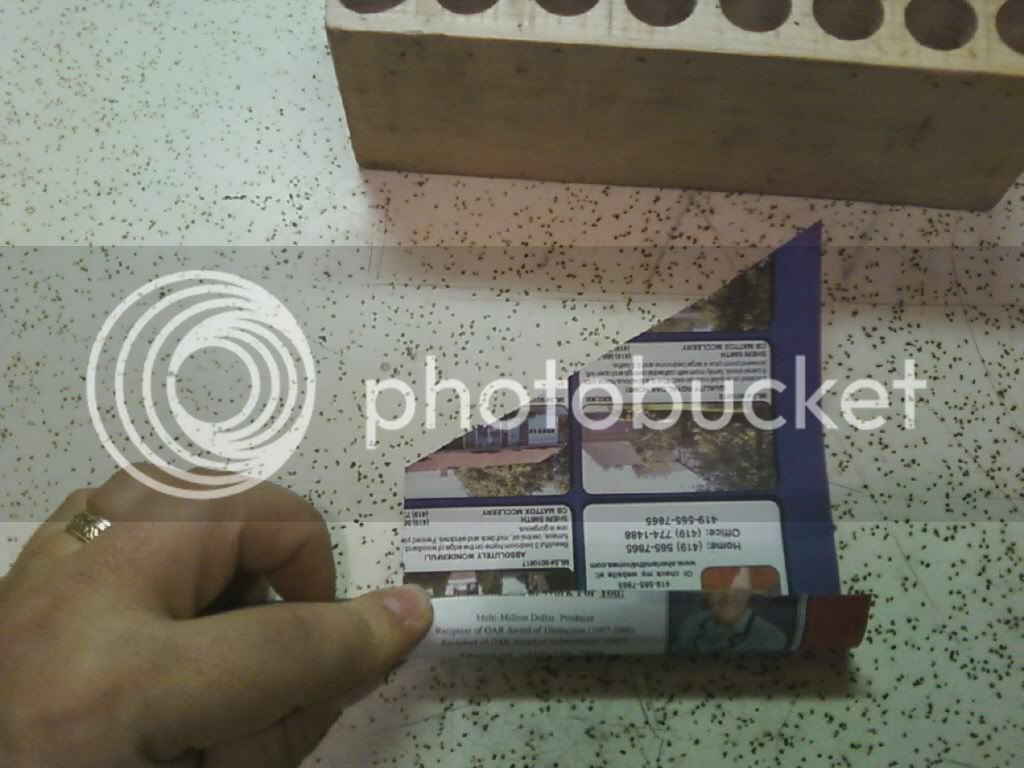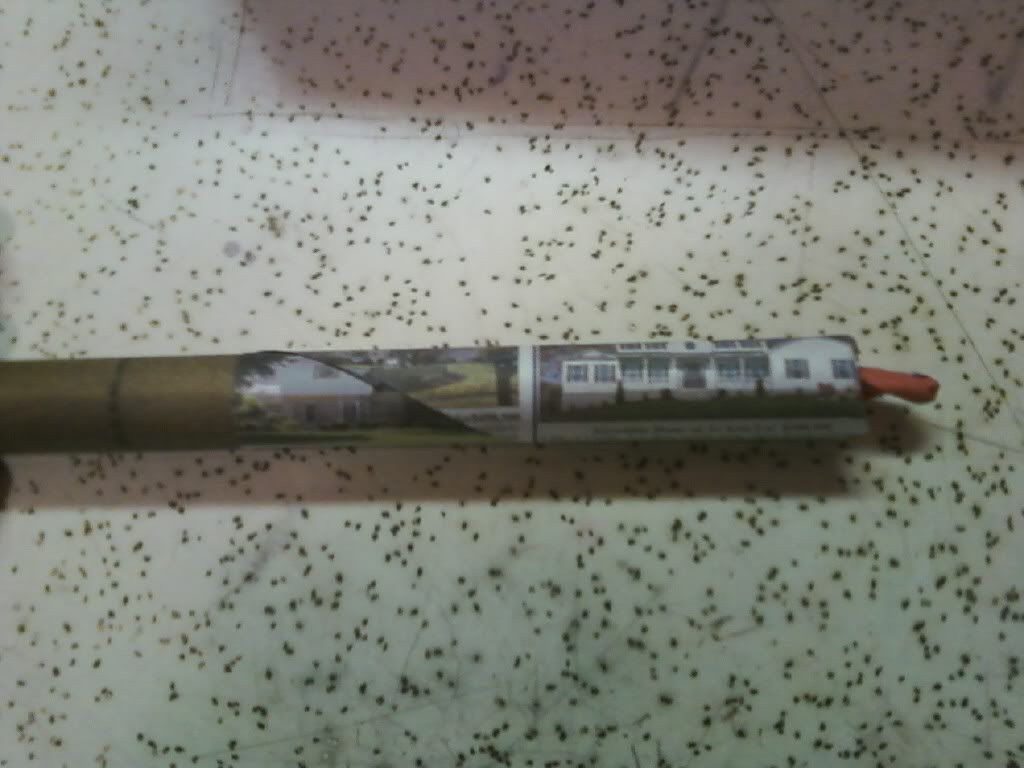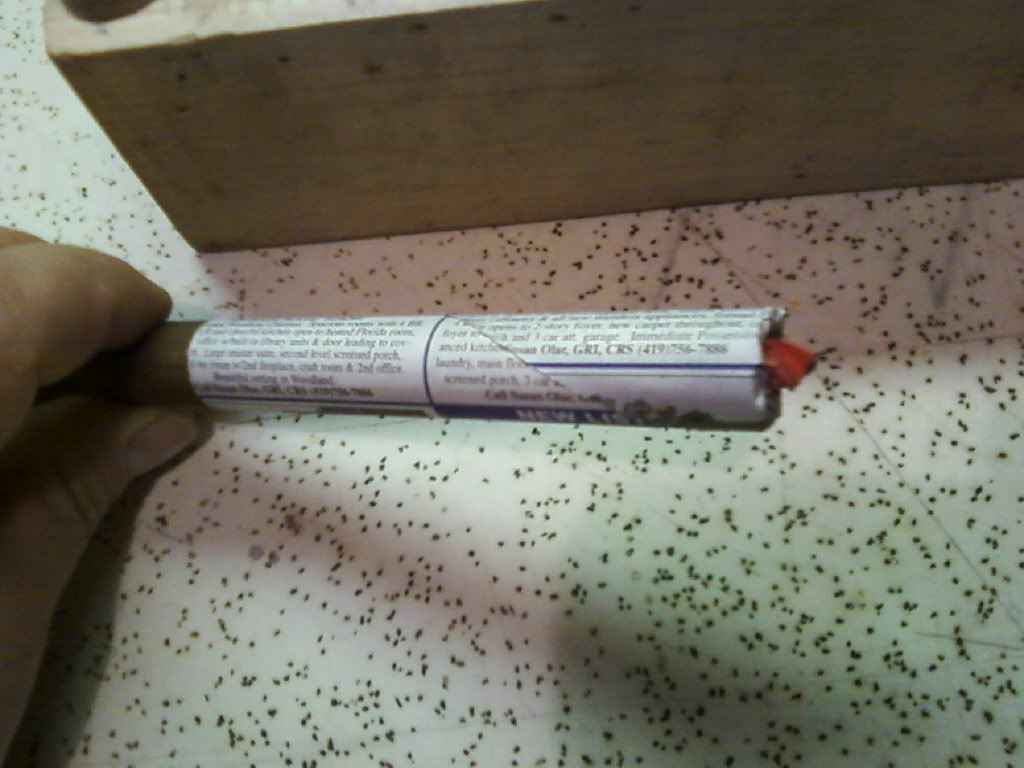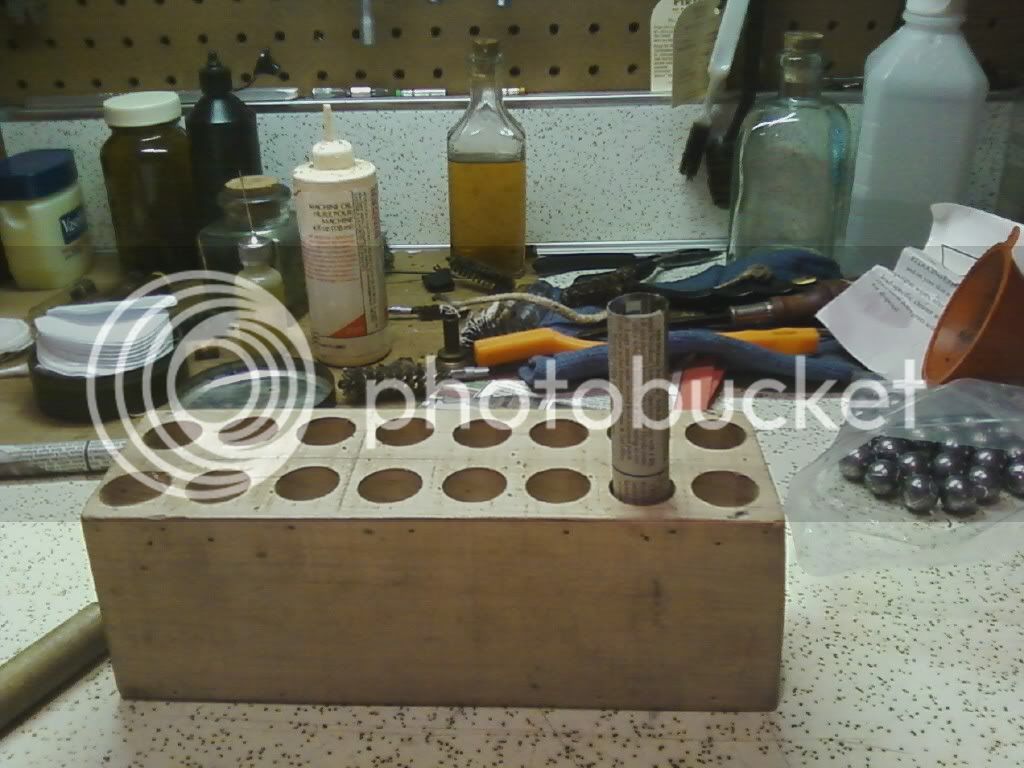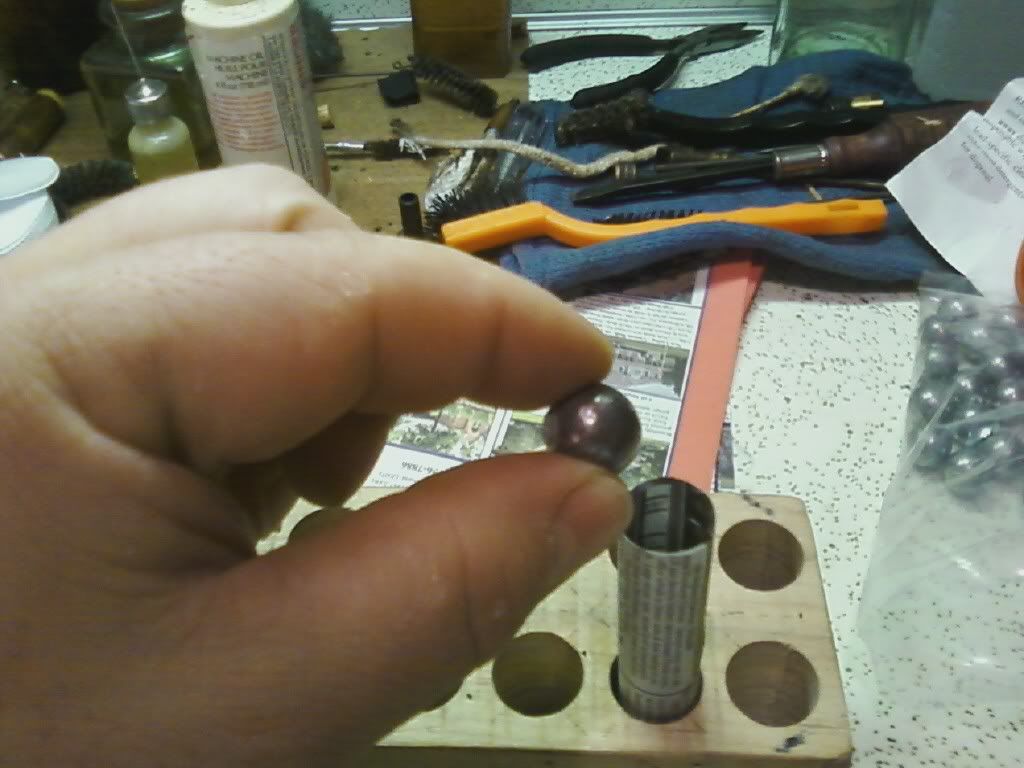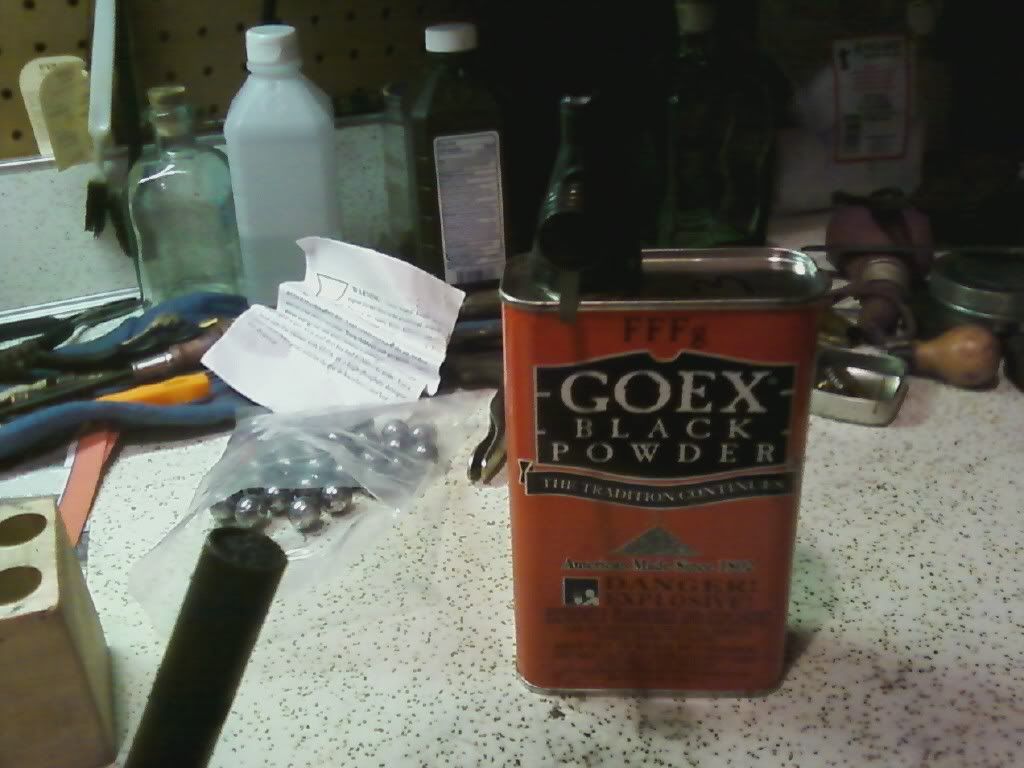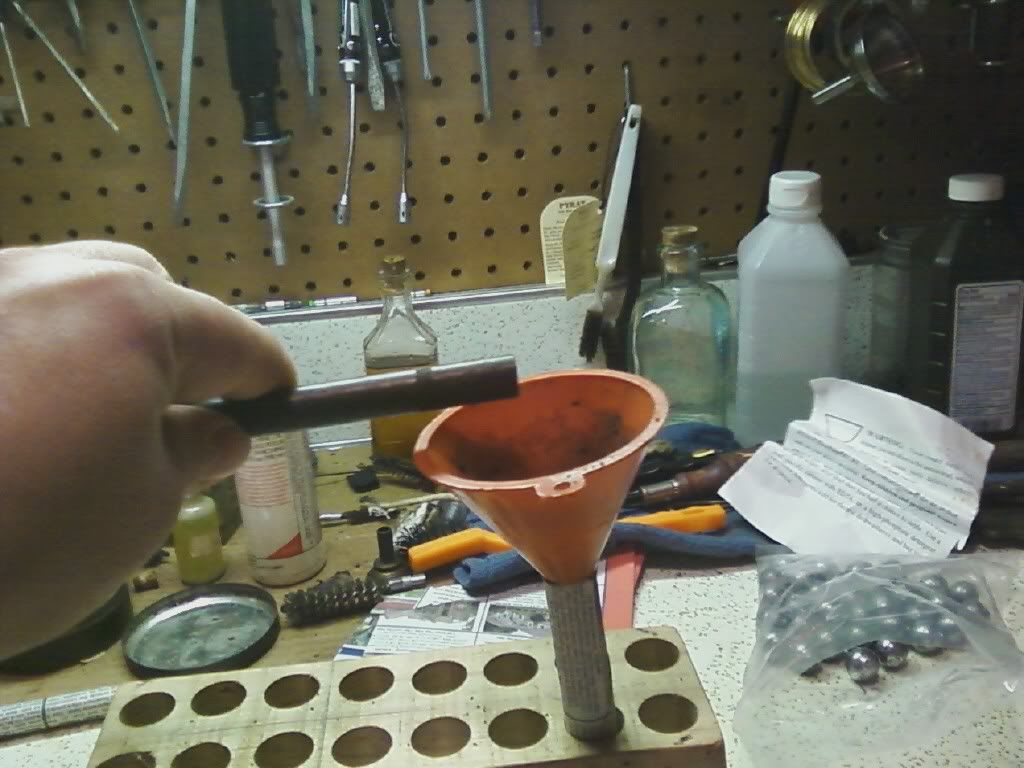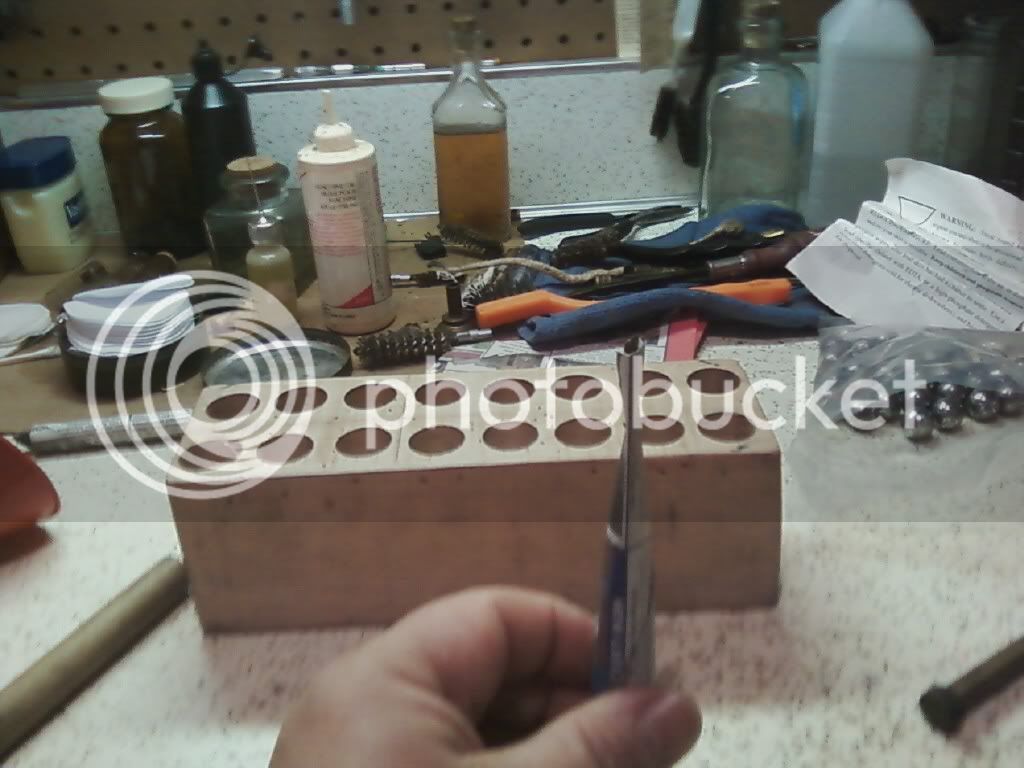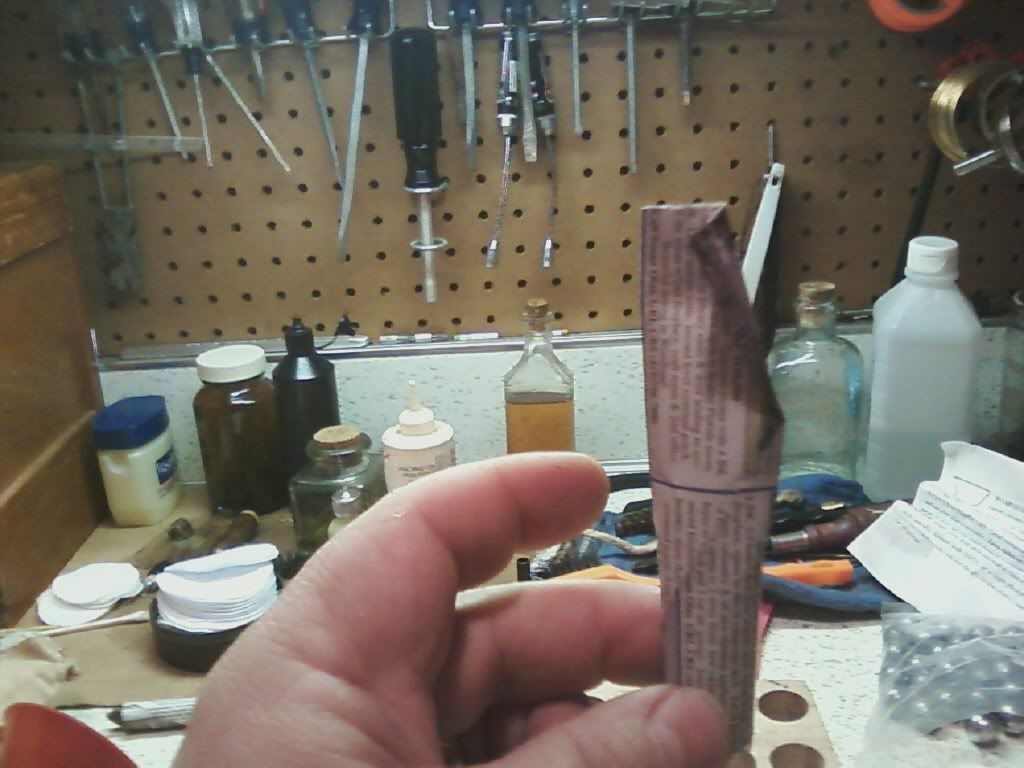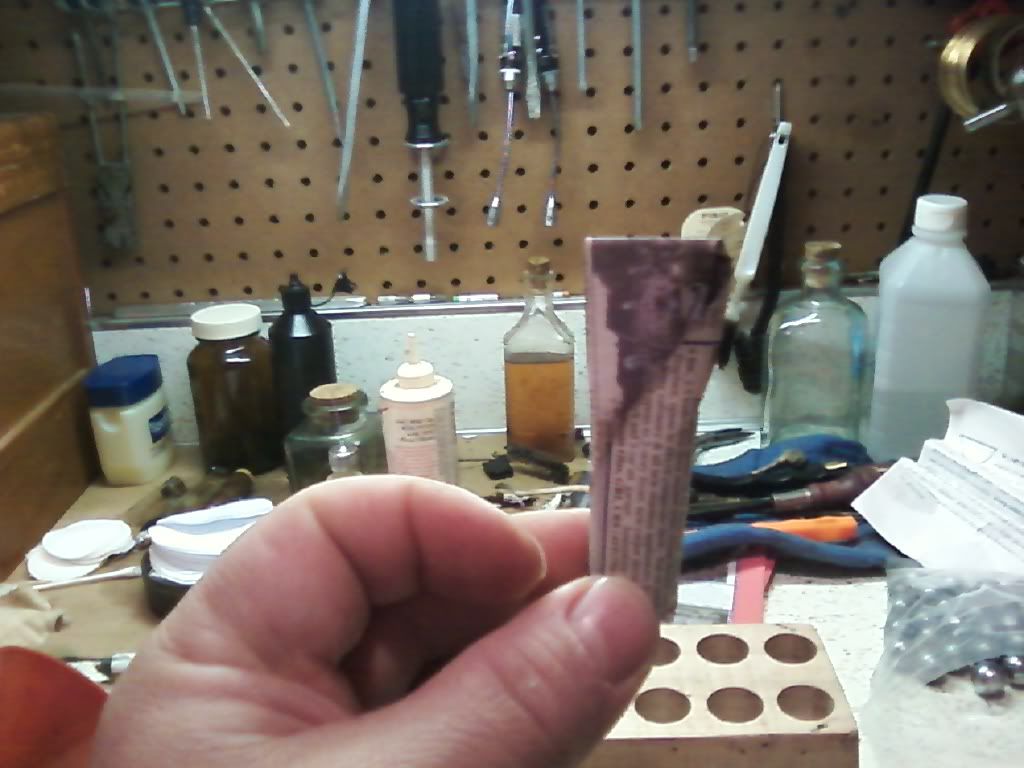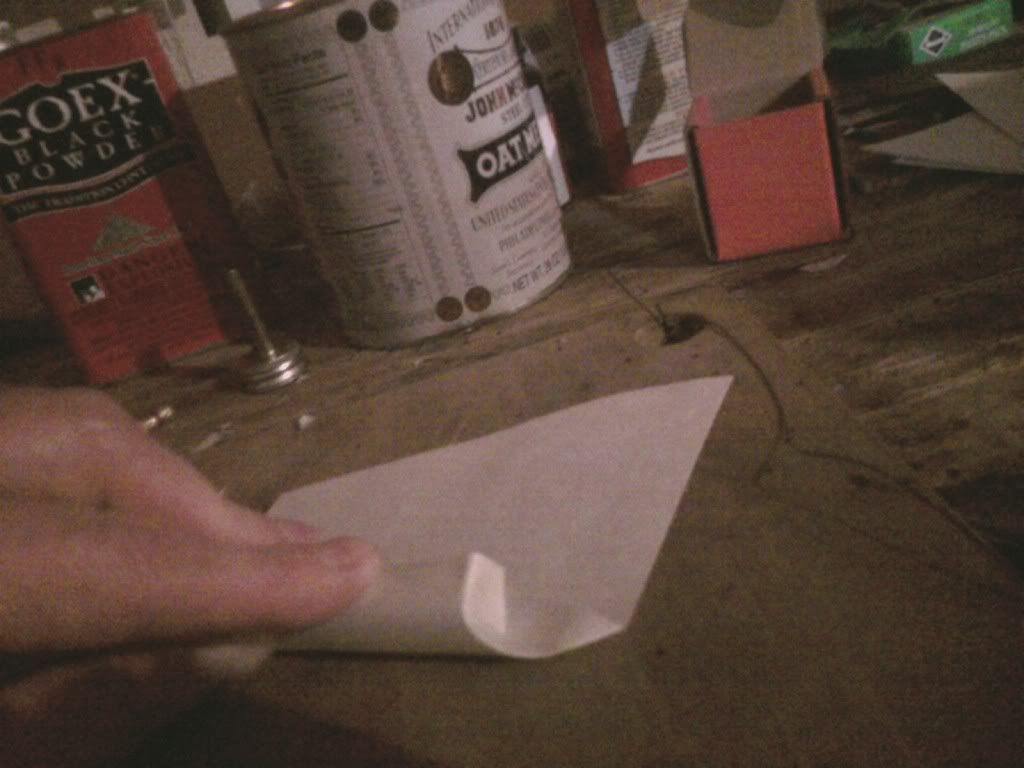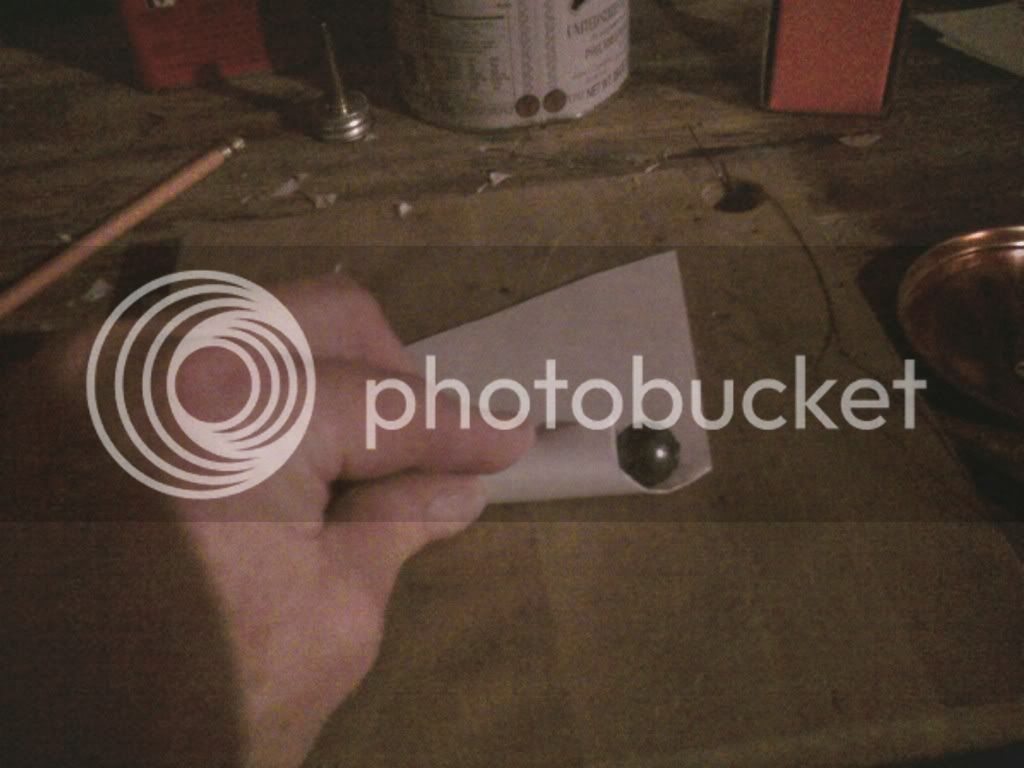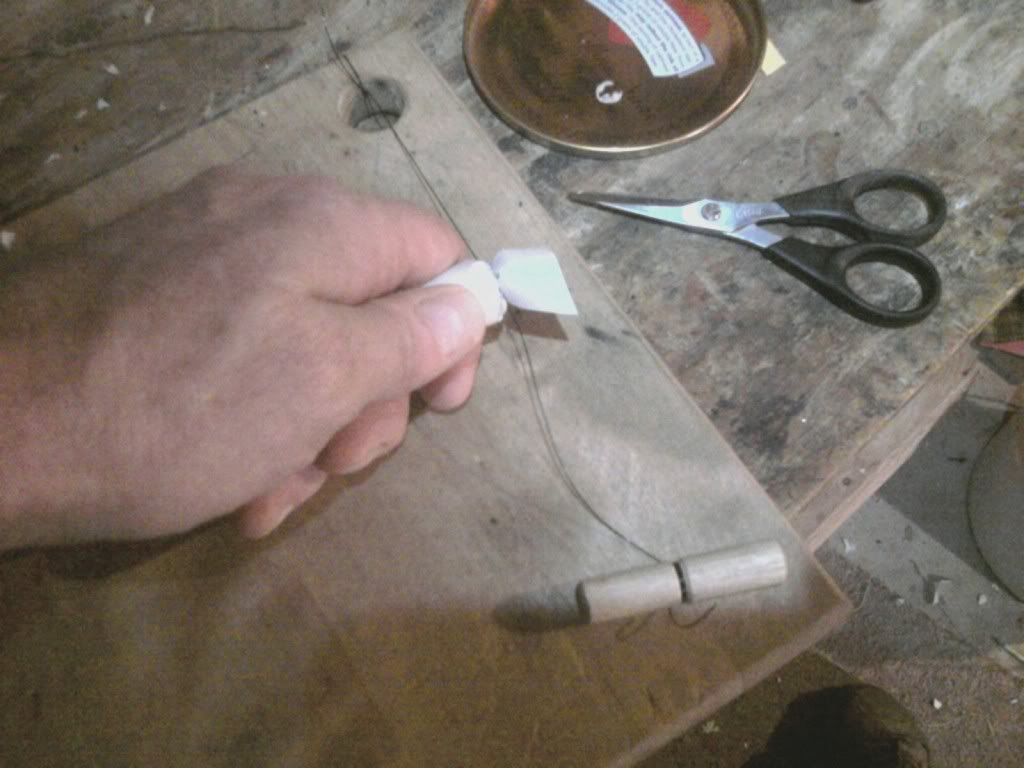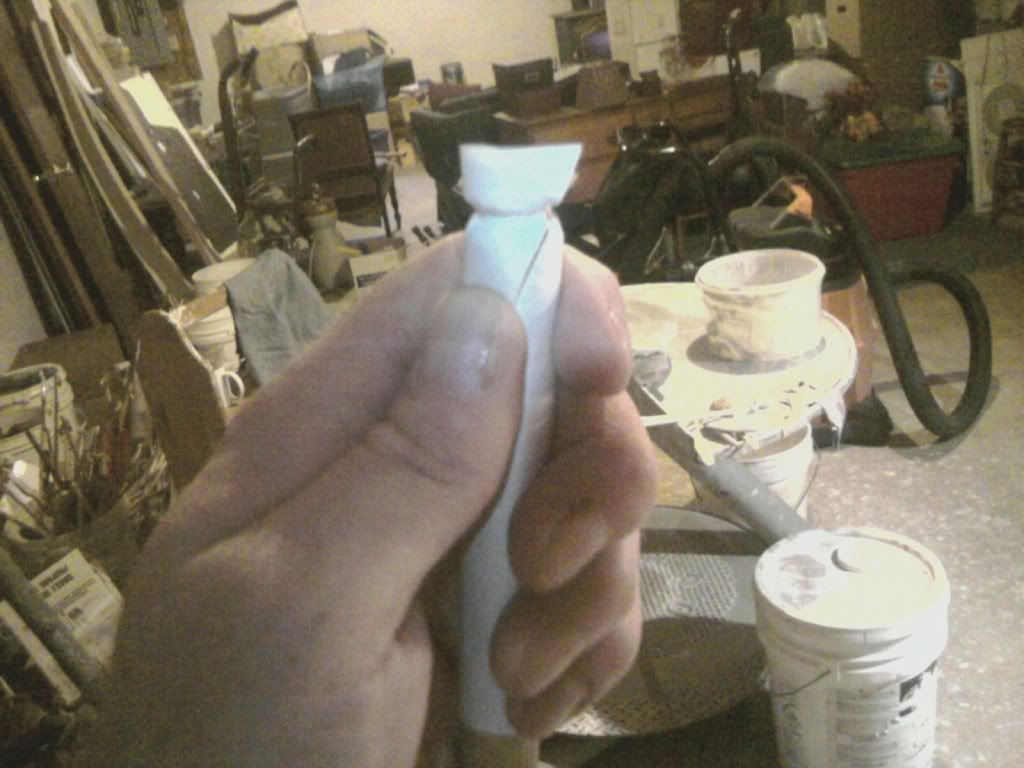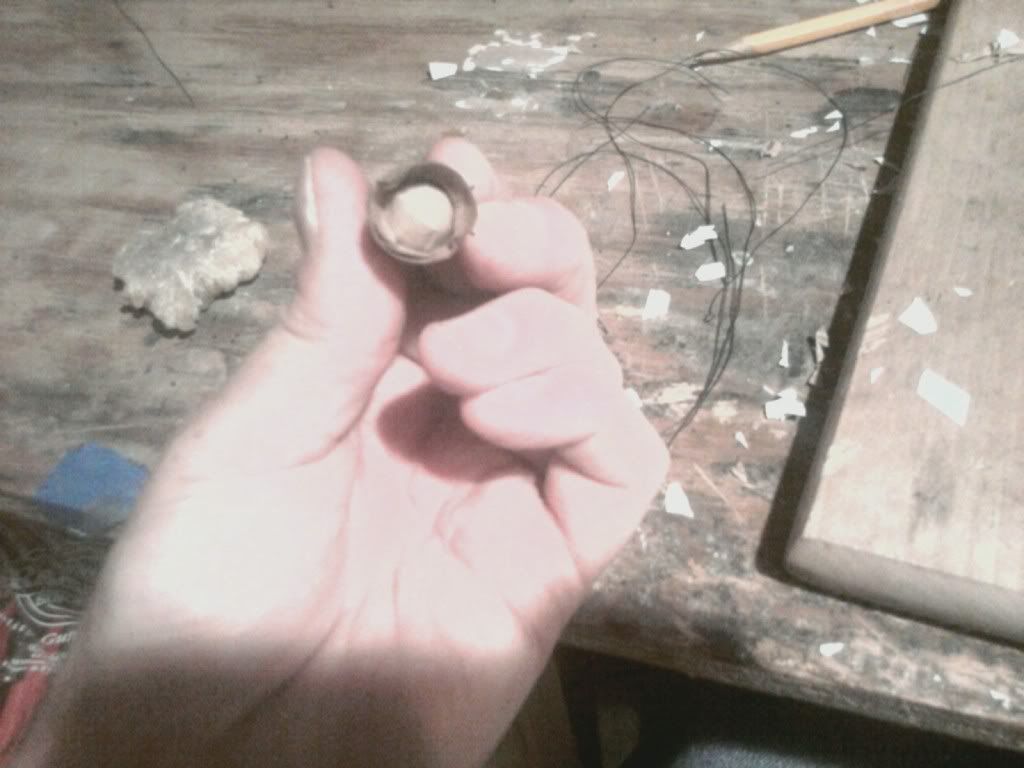You'll find, Tower, that as you tighten the string around the top of the Ball that it will cinch tight around the Sprue - that Ball ain't goin' anywhere. Also, although it's not clear in the link, there is a fold made over the top (concave portion) of the dowel as the paper is first begun to roll, the Ball is put in place, and then the tube is rolled the rest of the way. Once the ball is inserted and rolled up, it is totally encapsulated in Paper, and remains separate from the charge. The tying off at the waist simply snugs thing up more, and makes the round a little bit more integral for long periods of rough transport, whether by Cart, Pack, or Ship.
I don't chase the cartridge with thread all the way to the end & then tie of the charge, prefering instead to simply pleat & fold the tail, which makes it easier for me to grab and tear with the teeth, IMHO.
You'll find with practice, as you learn to PULL & not YANK the string, that you can go with thinner & thinner thread without breaking it. I use a pretty thin cotton embroidery floss - not much thicker than ordinary sewing thread. Make sure you "Beeswax well the Floss", otherwise it's very hard to keep things tight & neat.
In formal "Arsenal" level production, the initial tightning/cinching of the paper around the top off the ball is made much easier by using a fairly stout string anchored to a board/bench on one end, with a little Handle on the other. With the stout string you can pull the paper very tight, and when the string is released the paper remains tightly pleated. You then follow up with with the thinner cartridge thread. Sounds complicated, but is actually fairly straightforward, and very fast from a production standpoint. Pickering once based some calculations on the assumption that a Boy (pre-child labor laws)could be assumed to make 800-1000 cartridges a day. I personally find this pretty hard to imagine, although I suppose if you had an "Assembly Line" going, with one person rolling/cinching ball, next one finishing with Cartridge Thread, next one pouring charge, folding tail, etc, it might be possible. It goes without saying that if one was turning out cartridges at that rate, they might not exactly be the prettiest things in the world.
I used to have a link showing the Cinching jig I mentioned, but that link seems to be no longer working. I'll see if I can come up with something.
Remember, there's more than one way to skin a Cat - what I've told you is just one way. And like everything else, it takes a little practice...
Eric





